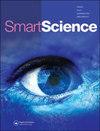Nonlinear static analysis of CNT/nanoclay particles reinforced polymer matrix composite plate using secant function based shear deformation theory
IF 1.4
Q2 MULTIDISCIPLINARY SCIENCES
引用次数: 5
Abstract
ABSTRACT The mechanically induced nonlinear statical assessment of the bending response of single-walled carbon nanotubes (CNTs) fibers on nanoclay-particle-reinforced polymer hybrid laminated composite plate is explored under static loading conditions. A numerical approach is used to find the mechanical properties of CNT-reinforced hybrid laminated plates prepared by involving nanoclay particles in the existing CNT-reinforced epoxy composites. The transverse nonlinear central deflection of a hybrid nanocomposite subjected to mechanical loading based on the Halpin–Tsai approach is evaluated. For the fundamental formulation, a secant-function-based shear deformation theory (SFSDT) and von Kármán nonlinearity are implemented. The influence of CNT/nanoclay particles over the nonlinear bending responses of the hybrid laminated plate under various loading circumstances is studied in detail. A Newton–Raphson method based on nonlinear finite element technique is used for the hybrid nanocomposite plate. Furthermore, the impact of different design parameters, such as thicknesses of CNT fibers, different interphases along with aspect ratios, stacking sequences under different boundary conditions, and the types of loads on the nonlinear transverse central deflection of CNT/nanoclay-reinforced polymer hybrid composite plate, has been investigated. The effectiveness of the suggested model has been confirmed by comparing it to deflection reactions found in the literature. Graphical abstract基于割线函数的剪切变形理论对碳纳米管/纳米粘土颗粒增强聚合物基复合材料板的非线性静力分析
研究了静载荷条件下单壁碳纳米管(CNTs)纤维在纳米粘土-颗粒增强聚合物杂化层合复合材料板上弯曲响应的力学非线性静力特性。采用数值方法研究了在现有碳纳米管增强环氧复合材料中加入纳米粘土颗粒制备的碳纳米管增强杂化层合板的力学性能。基于Halpin-Tsai方法,研究了混杂纳米复合材料在机械载荷作用下的横向非线性中心挠度。对于基本公式,基于割函数的剪切变形理论(SFSDT)和von Kármán非线性实现。研究了碳纳米管/纳米粘土对复合层合板在不同载荷下非线性弯曲响应的影响。采用基于非线性有限元技术的牛顿-拉夫逊方法对复合材料板进行了分析。此外,研究了碳纳米管纤维厚度、不同界面相随纵横比、不同边界条件下的堆叠顺序、载荷类型等不同设计参数对碳纳米管/纳米粘土增强聚合物杂化复合材料板非线性横向中心挠度的影响。通过将该模型与文献中发现的偏转反应进行比较,证实了该模型的有效性。图形抽象
本文章由计算机程序翻译,如有差异,请以英文原文为准。
求助全文
约1分钟内获得全文
求助全文
来源期刊

Smart Science
Engineering-Engineering (all)
CiteScore
4.70
自引率
4.30%
发文量
21
期刊介绍:
Smart Science (ISSN 2308-0477) is an international, peer-reviewed journal that publishes significant original scientific researches, and reviews and analyses of current research and science policy. We welcome submissions of high quality papers from all fields of science and from any source. Articles of an interdisciplinary nature are particularly welcomed. Smart Science aims to be among the top multidisciplinary journals covering a broad spectrum of smart topics in the fields of materials science, chemistry, physics, engineering, medicine, and biology. Smart Science is currently focusing on the topics of Smart Manufacturing (CPS, IoT and AI) for Industry 4.0, Smart Energy and Smart Chemistry and Materials. Other specific research areas covered by the journal include, but are not limited to: 1. Smart Science in the Future 2. Smart Manufacturing: -Cyber-Physical System (CPS) -Internet of Things (IoT) and Internet of Brain (IoB) -Artificial Intelligence -Smart Computing -Smart Design/Machine -Smart Sensing -Smart Information and Networks 3. Smart Energy and Thermal/Fluidic Science 4. Smart Chemistry and Materials
 求助内容:
求助内容: 应助结果提醒方式:
应助结果提醒方式:


